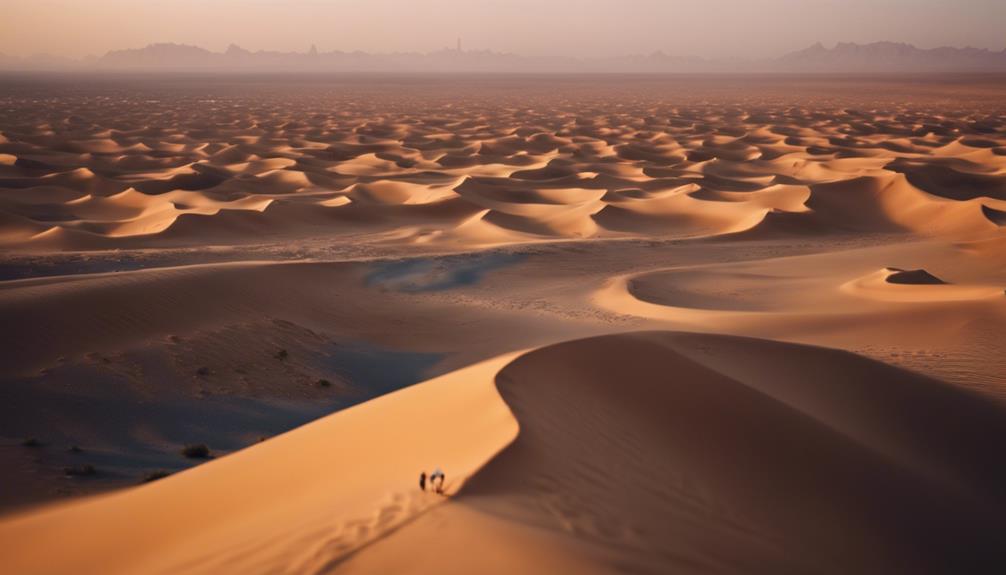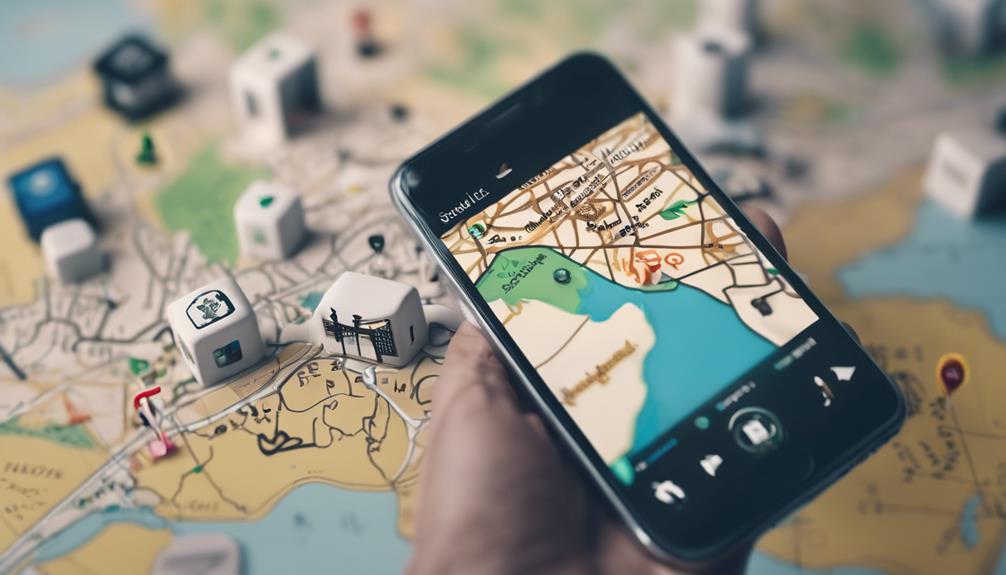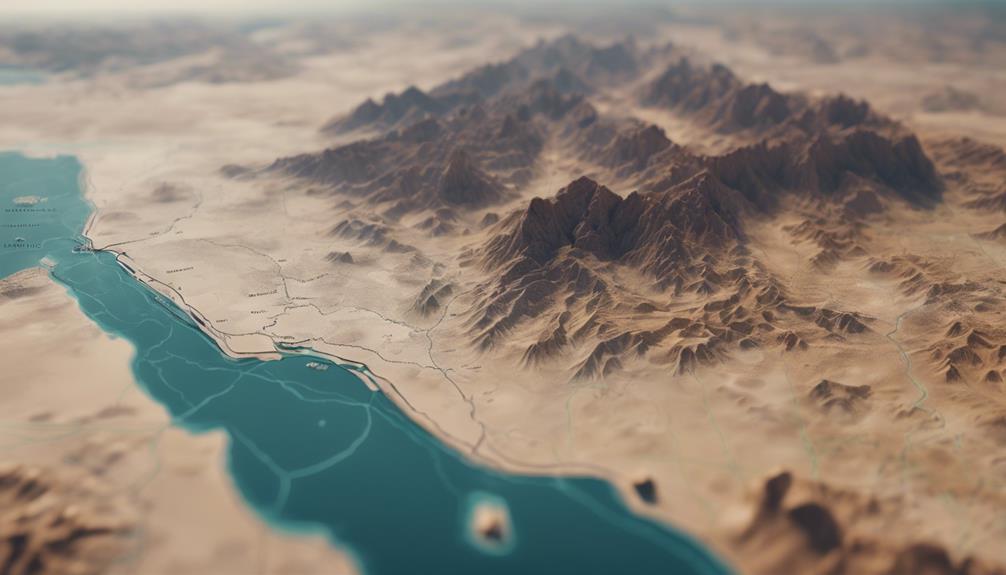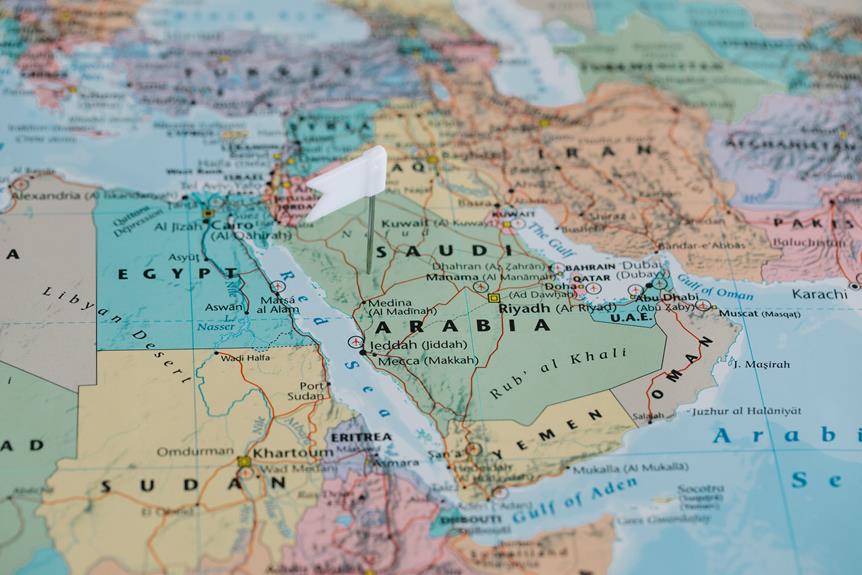In the vast expanse of Saudi Arabia, understanding the intricate details of its geography is crucial for any traveler or explorer. From the sweeping deserts to the rugged mountains, the kingdom's diverse landscapes present a unique challenge for navigation.
However, by mastering the essential map reading skills tailored to Saudi Arabia, one can unlock a world of possibilities and adventures waiting to be discovered. Stay tuned to uncover the key strategies and tools necessary to successfully traverse this intriguing terrain.
Geographic Features Overview

Saudi Arabia boasts a diverse range of geographical features that play a crucial role in shaping the country's landscape and environment. The country is renowned for its vast desert landscapes, with the Rub' al Khali, or the Empty Quarter, being one of the largest sand deserts globally. These arid regions dominate much of Saudi Arabia's interior, influencing its climate and ecosystems.
In contrast to the deserts, Saudi Arabia also features extensive coastal regions along the Red Sea and the Arabian Gulf. The Red Sea coastline stretches over 1,800 kilometers, offering a rich marine environment with diverse ecosystems. The Arabian Gulf coast, on the eastern side of the country, is characterized by its unique blend of desert landscapes meeting the sea.
These contrasting geographic features of desert expanses and coastal areas present a unique challenge for mapping in Saudi Arabia. Understanding and accurately representing these terrains are essential for creating comprehensive and reliable maps of the country's diverse topography.
Types of Maps in Saudi Arabia
Amidst Saudi Arabia's varied geographic features, the types of maps utilized in the country serve as crucial tools for accurately depicting its diverse topography. Thematic mapping is widely employed in Saudi Arabia to represent specific themes or variables such as population density, natural resources distribution, or economic activities. These thematic maps provide valuable insights for various sectors including urban planning, resource management, and environmental conservation.
In terms of cartographic design, maps in Saudi Arabia are crafted with precision to ensure clarity and accuracy. The use of different colors, symbols, and scales helps in effectively communicating spatial information. Topographic maps are particularly essential in Saudi Arabia due to its diverse terrain, ranging from deserts to mountains. These maps depict elevation changes, landforms, and infrastructure, aiding in navigation and resource management.
Navigational Tools and Apps

What modern tools and applications are commonly used for navigation in Saudi Arabia's diverse terrain and urban landscapes? In navigating Saudi Arabia, individuals often rely on GPS accuracy for precise location tracking. GPS-enabled devices such as smartphones and dedicated GPS units provide real-time positioning information, aiding travelers in finding their way through the country's varied landscapes.
Moreover, offline navigation apps have become increasingly popular due to their utility in areas with limited internet connectivity. These apps allow users to download maps beforehand, ensuring access to navigation tools even in remote regions where internet access may be unreliable. This proves to be particularly beneficial for travelers exploring off-the-beaten-path locations or for those who prefer not to use their mobile data while navigating.
Understanding Saudi Arabian Symbols
Interpreting the symbols commonly found in Saudi Arabia's signage and infrastructure is essential for effective navigation and understanding of the local environment. Symbol interpretation in Saudi Arabia holds significant cultural significance. For example, the color green is often associated with Islam and is frequently used in signs to indicate proximity to a mosque or other religious sites. Additionally, symbols depicting dates or palm trees are commonly used to highlight areas where these trees are grown, reflecting the importance of date palms in the local economy and culture.
Understanding symbols related to facilities or services is also crucial. Symbols denoting restrooms, gas stations, hospitals, and other amenities can vary in design and may differ from what one is accustomed to in other countries. Being able to interpret these symbols accurately can greatly aid travelers in navigating and accessing essential services while in Saudi Arabia.
Topographic Mapping Techniques

Utilizing advanced topographic mapping techniques is fundamental for accurately representing the intricate terrain features and geographical details of Saudi Arabia. In the context of mapping the vast and varied landscapes of Saudi Arabia, elevation profiles and contour lines play a crucial role in providing a comprehensive depiction of the terrain. Elevation profiles offer a vertical cross-sectional view of the land, showing changes in elevation along a specific path or route. This information is vital for understanding the steepness of slopes, identifying mountainous regions, and planning infrastructure development.
Contour lines, on the other hand, are a fundamental component of topographic maps, indicating points of equal elevation above sea level. By closely spaced contour lines, steep terrain can be distinguished from flat areas, aiding in assessing the ruggedness of the landscape. The detailed arrangement of contour lines on a map allows users to visualize the three-dimensional topography of Saudi Arabia accurately, facilitating navigation, resource management, and disaster preparedness efforts.
Mastering these topographic mapping techniques is essential for creating reliable and informative maps that support various activities across the diverse terrain of Saudi Arabia.
Frequently Asked Questions
What Are Some Common Cultural Norms and Customs to Keep in Mind While Navigating in Saudi Arabia?
Cultural etiquette is crucial when navigating Saudi Arabia. Respect local customs like avoiding public displays of affection and dressing modestly. Compliance with the dress code is essential, especially for women, who should cover their shoulders and knees.
Are There Any Specific Rules or Regulations for Driving in Saudi Arabia That Visitors Should Be Aware Of?
Road etiquette and traffic laws in Saudi Arabia require strict adherence. Visitors must have valid licenses, follow speed limits, and avoid using mobile devices while driving. Seatbelts are mandatory, and alcohol consumption is prohibited. Familiarize yourself with local regulations.
How Can Visitors Best Prepare for Navigating in the Desert Regions of Saudi Arabia?
To best prepare for navigating in desert regions of Saudi Arabia, visitors should familiarize themselves with desert survival techniques and carry essential navigation tools like GPS devices, compasses, and detailed maps. Being equipped and knowledgeable is key to a safe desert journey.
Are There Any Specific Safety Tips for Hiking or Exploring the Mountainous Regions of Saudi Arabia?
Safety precautions are crucial when exploring Saudi Arabia's mountainous regions. Always check weather conditions, carry adequate supplies, inform others of your plans, and be aware of cultural etiquette. Mountain terrain can be challenging, so proper preparation is essential for a safe and enjoyable exploration.
What Are Some Important Emergency Contact Numbers or Resources to Have on Hand While Exploring Saudi Arabia's Remote Areas?
When exploring remote areas in Saudi Arabia, it's crucial to have essential emergency protocols and communication channels. Carrying survival gear, knowing navigation techniques, and having access to emergency contact numbers like local authorities, embassies, and tour operators is vital for safety.
Conclusion
In conclusion, mastering map essentials is crucial for navigating Saudi Arabia's diverse geographic features. By understanding the types of maps available, utilizing navigational tools and apps, and interpreting symbols accurately, travelers and locals alike can confidently navigate the terrain.
With topographic mapping techniques, individuals can effectively plan routes and explore the varied landscapes of Saudi Arabia with ease.

